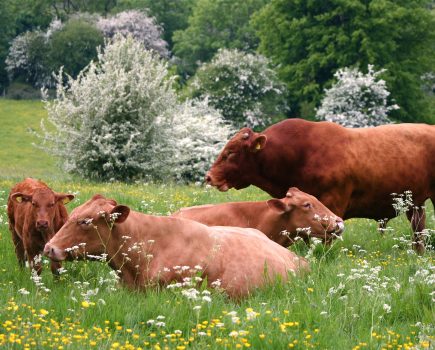Well it’s the middle of July and as far as the winter barley harvest is concerned, so far so good!
With recent fine weather, we have samples of Craft malting barley in Wiltshire and Hampshire with low nitrogen, good retention and low screenings; bushel weights are around 65 kgs, with low moisture.
The only problem is the high temperature at which the barley is being combined; anything over 25 degrees needs to be cooled immediately. Some samples are up to 35 degrees, at which temperature malting barley will suffocate if not conditioned and lose its germination.
That brings me to another really important point. Historically, when farmers have both milling wheat and malting barley ripe they have tended to go for the milling wheat, often leaving the malting barley, sometimes with disastrous effects for the quality. That is the wrong thing to do this year! Malting barley premiums are about double that of milling wheat. They have been up to £70 per tonne recently, so please, if you have a choice cut the malting barley first. If storage is an issue, Openfield have many stores in the south and west where the risk of handling and storing malting barley can be removed by quick movement off the combine.
France has completed its winter malting barley harvest and it is all good quality. Their first 25% of spring barley is also very good quality, but that was autumn planted. The bulk of their malting crop is still to come.
Eventually all the ‘war premium’ contained in the wheat futures evaporated. At one point it had lost over £100 per tonne, bringing prices back to pre-war levels. We expected and predicted that. There was an over-correction as the hedge funds sold every commodity you can think of, from energy and gold to grain. Since then the market has tried to recover, but it keeps getting knocked back by the inevitable northern hemisphere harvest pressure.
We seem to be trading economic recession rather than the fundamentals of grain supply and demand. The big ‘elephant in the room’ (the war) is getting smaller as talks continue to establish ‘safe corridors’ whereby wheat and maize could be exported via the Black Sea again. That apart, both Russia and Ukraine continue to export by whatever means they can.
The new Russian wheat crop continues to grow, with talk of a 45 million tonne surplus. Maybe Putin will claim that his “special operation” in Ukraine was just to get the price of world wheat up at a time when Russia has its biggest harvest for years! Certainly, with a much devalued rouble, Russia stands to make a ‘killing’ in the world wheat market, making prices its farmers could never have dreamed of.
Despite sanctions, there will be no shortage of buyers for Russian wheat; even Italy bought some recently. Our own harvest now takes priority over everything else. Without a big crop disaster somewhere, which isn’t on the cards just now, UK prices will not return to the peaks we saw two months ago. Nonetheless, the residual values are still way above anything you could have budgeted for.
Harvest is too close to bother speculating about yields now. Quite simply, when you get it in the barn, get on and sell what you need to up to Christmas anyway.
Barley remains the most vulnerable to price drop because if the spring mirrors the winter, we will have an exportable surplus of up to three quarters of a million tonnes and it will have to be shipped.
If the UK and Europe have only a harvest of average quality and yield, prices will fall, because we are too expensive to compete for third country business. So malting prices and premium can only fall further (as long as we don’t have rain for the first two weeks of August), so when you have the quality, sell it.
The ‘slow burn’ market will probably be wheat (in the January to June 2023 position) and oilseed rape, so tucking some away for that, if you have the storage, makes sense. The big volatility has not gone away, any more than the war has. There will be chances to sell forward at enhanced carries, but please forget about what you could have sold at and didn’t!







